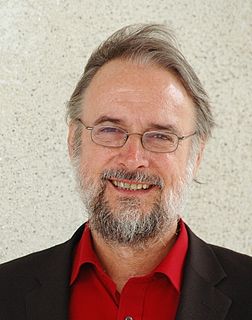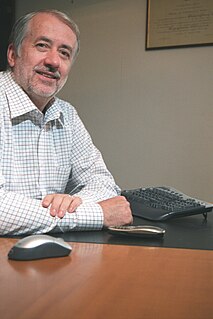MP3 is a coding format for digital audio developed largely by the Fraunhofer Society in Germany, with support from other digital scientists in the US and elsewhere. Originally defined as the third audio format of the MPEG-1 standard, it was retained and further extended — defining additional bit-rates and support for more audio channels — as the third audio format of the subsequent MPEG-2 standard. A third version, known as MPEG 2.5 — extended to better support lower bit rates — is commonly implemented, but is not a recognized standard.

The Moving Picture Experts Group (MPEG) is an alliance of working groups of ISO and IEC that sets standards for media coding, including compression coding of audio, video, graphics and genomic data, and transmission and file formats for various applications. Together with the JPEG group, MPEG is organized under ISO/IEC JTC 1/SC 29 – Coding of audio, picture, multimedia and hypermedia information.
MPEG-1 Audio Layer II or MPEG-2 Audio Layer II is a lossy audio compression format defined by ISO/IEC 11172-3 alongside MPEG-1 Audio Layer I and MPEG-1 Audio Layer III (MP3). While MP3 is much more popular for PC and Internet applications, MP2 remains a dominant standard for audio broadcasting.
Advanced Audio Coding (AAC) is an audio coding standard for lossy digital audio compression. Designed to be the successor of the MP3 format, AAC generally achieves higher sound quality than MP3 at the same bit rate.

Karlheinz Brandenburg is a German electrical engineer and mathematician. Together with Ernst Eberlein, Heinz Gerhäuser, Bernhard Grill, Jürgen Herre and Harald Popp, he developed the widespread MP3 method for audio data compression. He is also known for his elementary work in the field of audio coding, the perception measurement, the wave field synthesis and psychoacoustics. Brandenburg has received numerous national and international research awards, prizes and honors for his work. Since 2000 he is Professor of Electronic Media Technology at the Technical University Ilmenau. Brandenburg was significantly involved in the founding of the Fraunhofer Institute for Digital Media Technology (IDMT) and currently serves as its director.
In telecommunications and computing, bit rate is the number of bits that are conveyed or processed per unit of time.
H.261 is an ITU-T video compression standard, first ratified in November 1988. It is the first member of the H.26x family of video coding standards in the domain of the ITU-T Study Group 16 Video Coding Experts Group, and was developed with a number of companies, including Hitachi, PictureTel, NTT, BT and Toshiba. It was the first video coding standard that was useful in practical terms.
Ken Sakamura, as of April 2017 is a Japanese professor and dean of the Faculty of Information Networking for Innovation and Design at Toyo University, Japan. He is a former professor in Information science at the University of Tokyo. He is the creator of the real-time operating system architecture TRON.
TwinVQ is an audio compression technique developed by Nippon Telegraph and Telephone Corporation (NTT) Human Interface Laboratories in 1994. The compression technique has been used in both standardized and proprietary designs.
MPEG-4 Audio Lossless Coding, also known as MPEG-4 ALS, is an extension to the MPEG-4 Part 3 audio standard to allow lossless audio compression. The extension was finalized in December 2005 and published as ISO/IEC 14496-3:2005/Amd 2:2006 in 2006. The latest description of MPEG-4 ALS was published as subpart 11 of the MPEG-4 Audio standard in August 2009.

Kamisetty Ramamohan Rao is an Indian-American electrical engineer. He is a professor of Electrical Engineering at the University of Texas at Arlington . Academically known as K. R. Rao, he is credited with the co-invention of discrete cosine transform (DCT), along with Nasir Ahmed and T. Natarajan due to their landmark publication, N. Ahmed, T. Natarajan, and K. R. Rao, "Discrete Cosine Transform", IEEE Transactions on Computers, 90–93, Jan 1974.

MPEG-4 Part 14 or MP4 is a digital multimedia container format most commonly used to store video and audio, but it can also be used to store other data such as subtitles and still images. Like most modern container formats, it allows streaming over the Internet. The only filename extension for MPEG-4 Part 14 files as defined by the specification is .mp4. MPEG-4 Part 14 is a standard specified as a part of MPEG-4.

Leonardo Chiariglione is an Italian engineer. He has been at the forefront of a number of initiatives that have helped shape media technology and business as we know them today, in particular he was the chairman of, and co-founded the Moving Picture Experts Group (MPEG) together with Hiroshi Yasuda.

Thomas Wiegand is a German electrical engineer who substantially contributed to the creation of the H.264/AVC, H.265/HEVC, and H.265/VVC video coding standards. For H.264/AVC, Wiegand was one of the chairmen of the Joint Video Team (JVT) standardization committee that created the standard and was the chief editor of the standard itself. He was also an active technical contributor to both standards. Wiegand also holds a chairmanship position in the ITU-T VCEG of ITU-T Study Group 16 and previously in ISO/IEC MPEG standardization organizations. In July 2006, the video coding work of the ITU-T jointly led by Gary J. Sullivan and Wiegand for the preceding six years was voted as the most influential area of the standardization work of the CCITT and ITU-T in their 50-year history.
Gary Joseph Sullivan is an American electrical engineer who led the development of the AVC, HEVC, and VVC video coding standards and created the DirectX Video Acceleration (DXVA) API/DDI video decoding feature of the Microsoft Windows operating system.
Fumitada Itakura is a Japanese scientist. He did pioneering work in statistical signal processing, and its application to speech analysis, synthesis and coding, including the development of the linear predictive coding (LPC) and line spectral pairs (LSP) methods.
Dr Vinod V Vasudevan is an innovator and the Group CEO of Flytxt.
A video coding format is a content representation format for storage or transmission of digital video content. It typically uses a standardized video compression algorithm, most commonly based on discrete cosine transform (DCT) coding and motion compensation. Examples of video coding formats include H.262, MPEG-4 Part 2, H.264, HEVC (H.265), Theora, RealVideo RV40, VP9, and AV1. A specific software or hardware implementation capable of compression or decompression to/from a specific video coding format is called a video codec; an example of a video codec is Xvid, which is one of several different codecs which implements encoding and decoding videos in the MPEG-4 Part 2 video coding format in software.

Nasir Ahmed is an Indian-American electrical engineer and computer scientist. He is Professor Emeritus of Electrical and Computer Engineering at University of New Mexico (UNM). He is best known for inventing the discrete cosine transform (DCT) in the early 1970s. The DCT is the most widely used data compression transformation, the basis for most digital media standards and commonly used in digital signal processing. He also described the discrete sine transform (DST), which is related to the DCT.
ISO/IEC JTC 1/SC 29 Coding of audio, picture, multimedia and hypermedia information is a standardization subcommittee of the Joint Technical Committee ISO/IEC JTC 1 of the International Organization for Standardization (ISO) and the International Electrotechnical Commission (IEC), that develops and facilitates international standards, technical reports, and technical specifications within the field of audio, picture, multimedia, and hypermedia information coding. The international secretariat of ISO/IEC JTC 1/SC 29 is the Japanese Industrial Standards Committee (JISC) located in Japan.






